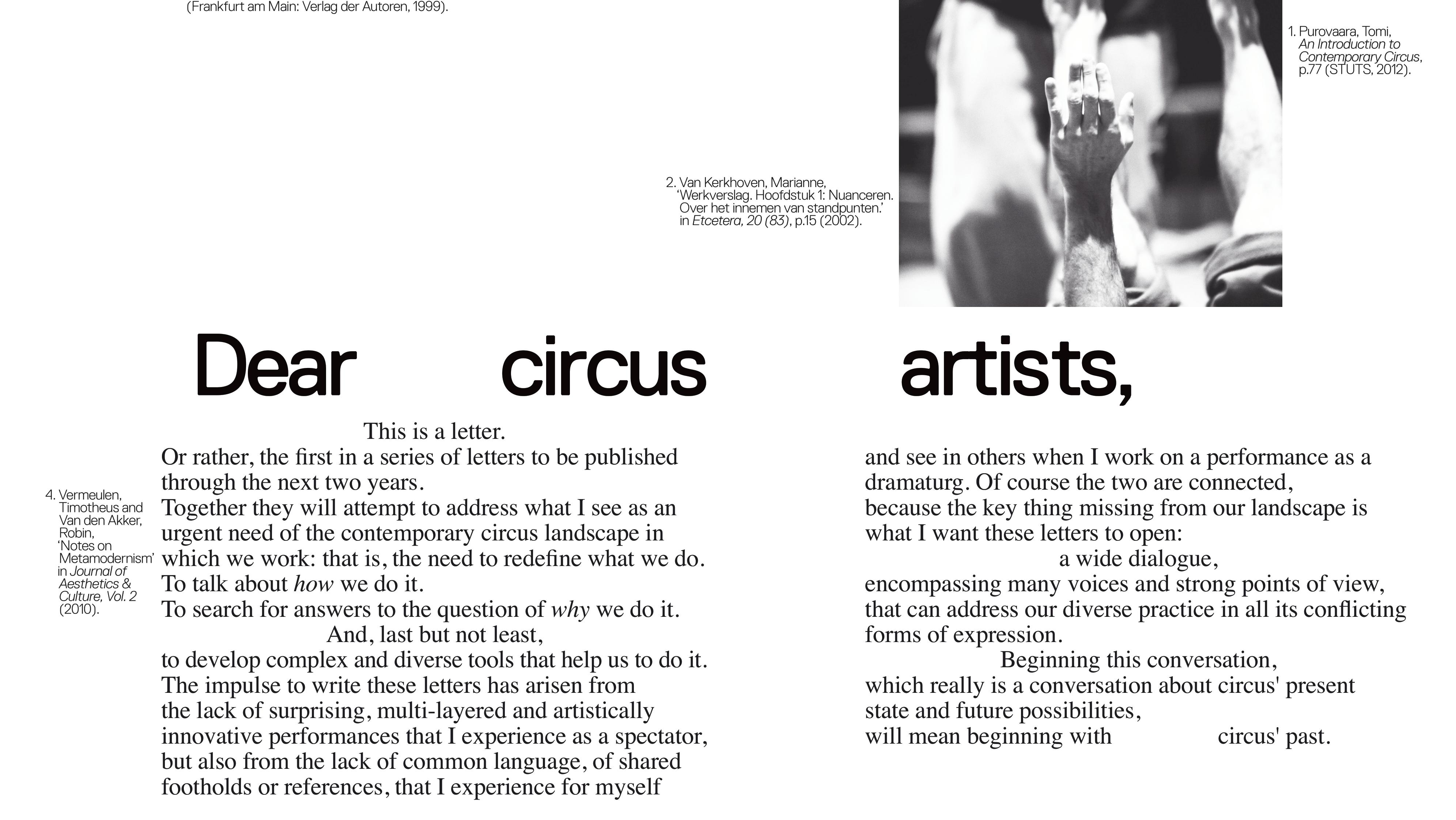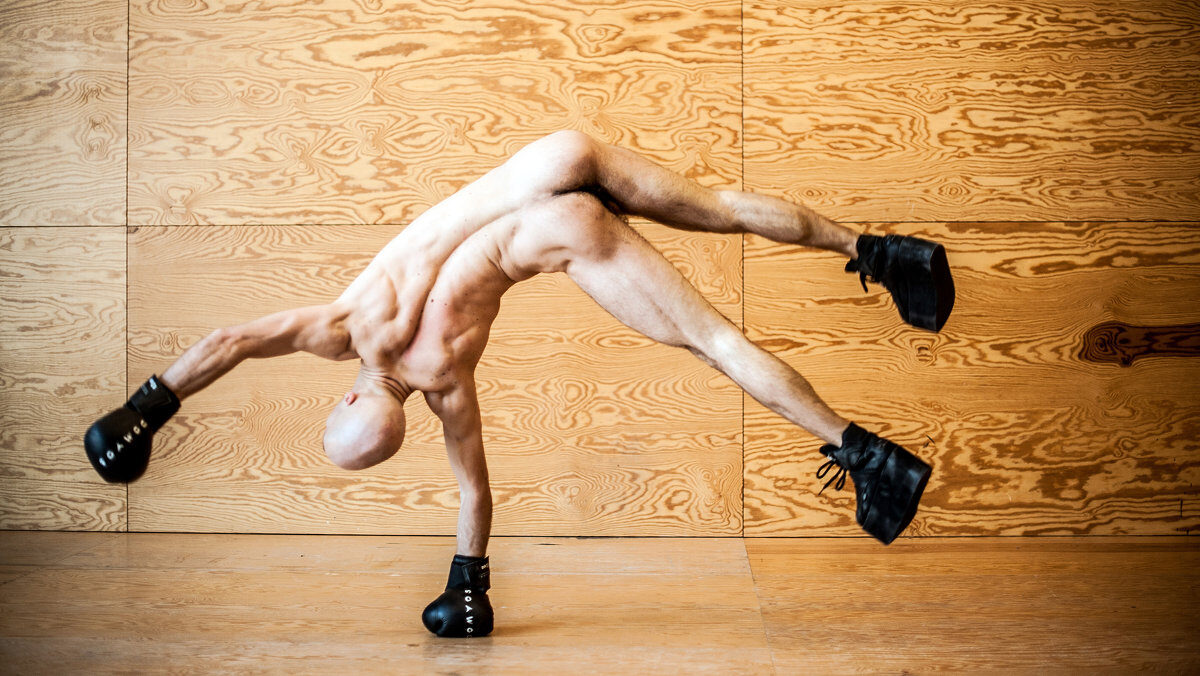Transitional Objects
So the first distinction I want to make is between circography and circus. Circus is the medium; circography I see as the staging of circus elements, without necessarily having to use the medium of circus.
It is a similar distinction to choreography and dance. Choreography can be done with dancers, but it can also be done with cars or with plastic bags – with objects. In the same way a circography doesn’t have to be performed with human beings: circography is the staging of circus elements with objects. From this perspective I don’t see juggling as circus, because juggling is a choreography about objects – it’s circography.
There are many things around the circus medium which have been confused with circus.
For instance I consider the clown, or the traditional tent, to be more of a staging of circus: these things fall under circography, and are not part of the medium of circus. I also think the circus medium is always manifested by a living being, probably a human.
So now we’re at the medium of circus – it’s something that I’ve been trying a lot to define already, ever since I graduated.
Maybe the easiest way to define it is that it’s a framing of something extraordinary, but perhaps that’s too easy. I like the word merkwürdig – it’s a German/Flemish word, and it means first ‘extraordinary’ but then also ‘worth noticing’ or ‘worth framing’. Perhaps the circus can also be a kind of framing – it’s framing the view of the spectator on something that may seem to be random, but that is made very interesting through the binoculars of the medium.
But I found that here too maybe it’s a bit too easy to just define circus as merkwürdig. So I’ve tried to think what are the essential characteristics of circus, and one thing is I think circus is about a relationship with an object.
And in this case, I think it’s a transitional object. What the transitional means here is that the object makes something possible with my body that I couldn’t do without it – it as an extension of me. The circus artist relates to the object; and then the two of them, together, relate to the audience. It is not a triangular relationship.
The easiest analogy is a transitional sex object, like a dildo. It’s a prosthesis, an extension of me, and it is both a limitation and an object that makes something possible. It can give pleasure, but you have to think that it’s not there; if you are aware that it’s an object then it limits a lot the pleasure of seeing.
Another essential characteristic of circus is what I call ‘risk-danger’. The risk is for the circus artist and the danger is for the audience. The best example is a tightwire artist, who does not perceive danger but takes a risk: if I walk on a tightwire and it’s two metres high perhaps it’s technically still dangerous, but through practice and repetition I know the possible outcomes and it becomes not dangerous but rather a calculated risk.
In circus you need repetition or you need practice; it’s through practice that the artist knows what can go wrong, what are the outcomes.
A circus artist is someone who knows the outcomes, and skill in that respect we can just define as doing something very well and knowing what will happen. So circus is not about adaptability in any situation. It’s about dealing with one situation very well. I think this is a very important notion: circus does not display adaptability; in border cases like parkour I think it can be circus if the practitioners know to which objects they are relating to and if they know the possible outcomes.
So circus is a repetitive practice with a certain object in a fixed situation. It’s not like free skiing – if you don’t know what’s on your way, it’s not circus.










